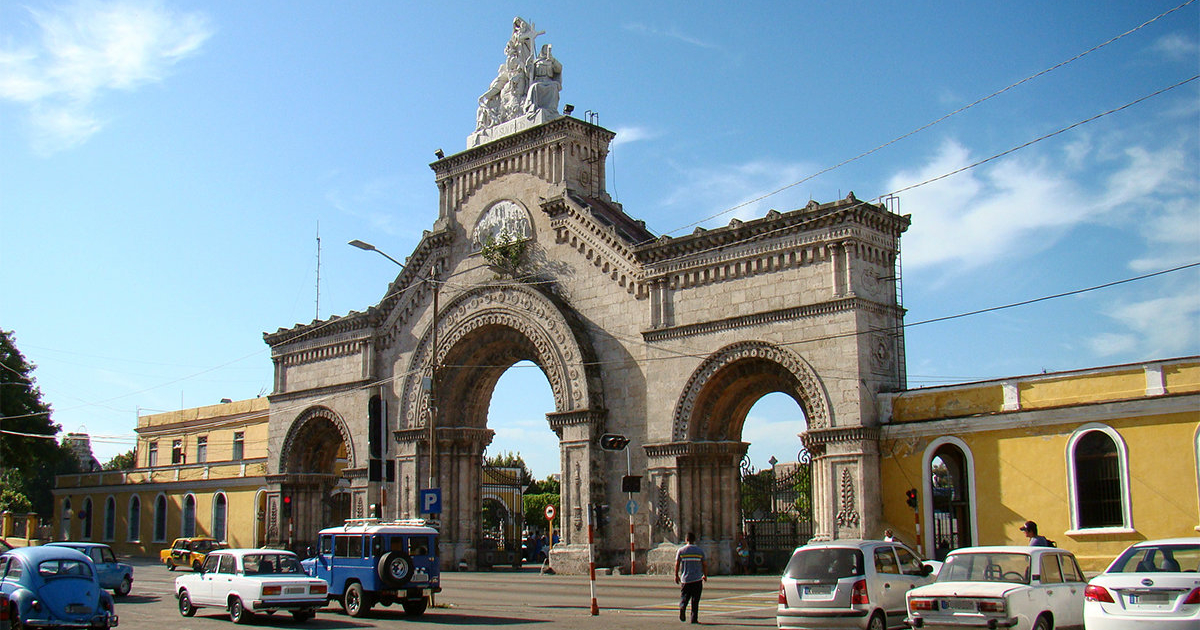
The Cristóbal Colón Necropolis is a magnificent funerary urban complex covering a rectangular area of 57 hectares. It was declared a National Monument of Cuba in 1987.
It was designed by Calixto Aureliano de Loira y Cardoso, a graduate of the Royal Academy of Fine Arts of San Fernando in Madrid. In 1870, this prominent Spanish architect won the public competition organized by the Cemetery Board in Havana for the construction of the Colón Cemetery.
The layout of the necropolis is divided into a large central cross that forms four major areas, known as quarters, which are designated according to the cardinal points: Northeast, Northwest, Southeast, and Southwest. This defines its composition as a grid of streets, blocks, and lots.
The two main central avenues that divide the layout of the cemetery are 21 meters wide, one running from North to South and the other from East to West.
Along their route, these avenues intersect perpendicularly, and at this crossing is located the Chapel, forming a roundabout in the center of the necropolis. The chapel of the Colón Cemetery has an octagonal layout and is the only one of its kind in Cuba.
The construction of this impressive cemetery took 16 years. It was opened to the public on July 2, 1886.
Over the years, this institution has undergone various necessary modifications to improve funeral services in a city that has seen its population grow significantly. In 1959, the cemetery was intervened by the Revolution, and in 1967 it was nationalized.
The Colón Necropolis has more than 52,000 properties, with 8,000 of them having Levels of Heritage Protection I and II.
The main façade, built between 1871 and 1874 of carved stone, was designed by architect Eugenio Rayneri. This decorative ensemble received two bas-reliefs in 1899 representing the Resurrection of Lazarus and the Crucifixion of Jesus Christ, both works created by the Cuban sculptor José Vilalta Saavedra.
The sculptural group that crowns the main entrance of the Colón Cemetery consists of three marble statues, symbolizing the Three Theological Virtues: Faith, Hope, and Charity. At the base, there is an inscription in Latin that reads, Janua Sum Pacis, which means "I am the Gate of Peace."

